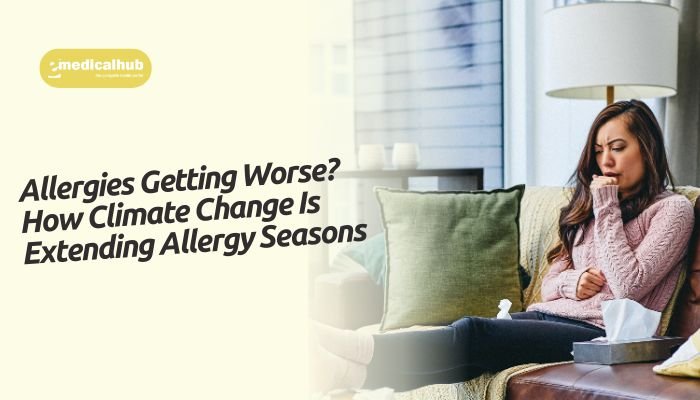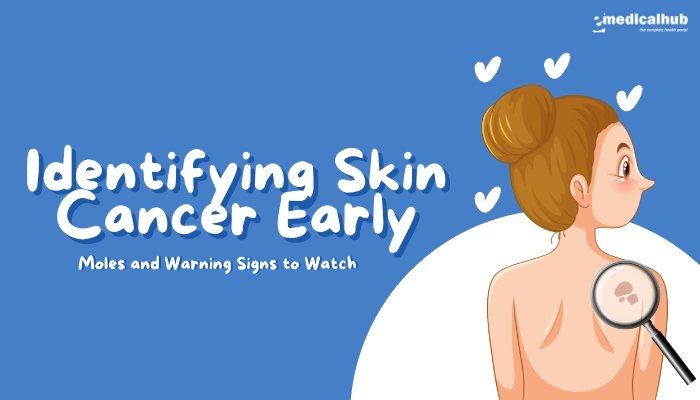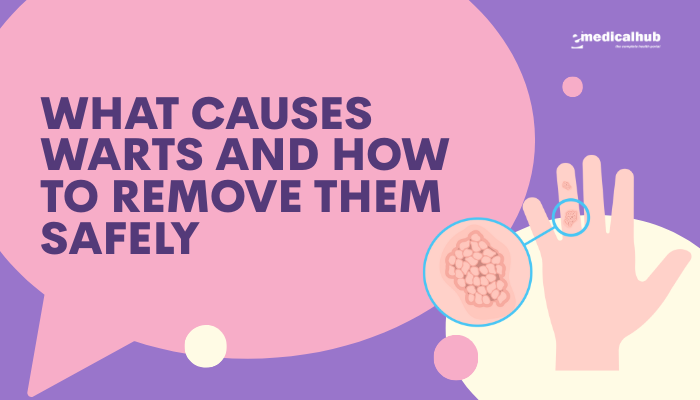Introduction
Does it feel like your spring sneezing fits begin earlier and linger longer each year? Or perhaps you’ve noticed a sudden surge in fall allergy symptoms that used to taper off more quickly? Climate change is reshaping our planet in numerous ways—among them, altering plant growth patterns, pollen production, and air quality.
These changes can lengthen and intensify allergy seasons, leaving millions of people with extended itchy eyes, runny noses, and respiratory discomfort. What was once a predictable few weeks of misery is now transforming into months of relentless sneezing and congestion.
This article examines how a warming climate, rising carbon dioxide levels, and shifting precipitation patterns affect the timing and potency of allergens, from ragweed pollen to mold spores. We will explore which areas and populations are particularly susceptible, the mechanisms behind expanding allergy seasons, and strategies to manage symptoms or reduce exposure.
By understanding the intersection of climate science and allergen biology, you can better prepare for year-round relief—and become more aware of how our individual and collective choices about carbon emissions can impact not just the planet, but our nasal passages and lungs.
The Basics of Seasonal Allergies
What Are Allergies?
- Definition: Allergies occur when the immune system overreacts to substances (allergens) typically harmless to most people—such as pollen, dust mites, pet dander, or mold.
- Symptoms: Sneezing, runny or stuffy nose, itchy or watery eyes, sinus pressure, and sometimes wheezing or shortness of breath (especially if asthma is involved).
- Types of Seasonal Allergies: Commonly associated with pollen from trees in spring, grasses in early summer, and weeds in late summer or autumn. In some areas, mold thrives in damp, warm conditions year-round or after rainfall.
Evolution of Seasonal Patterns
- Historic Norms: Typically, spring allergies peaked from late March to early June in many temperate regions, followed by a lull, then a second wave from ragweed in late summer to early fall.
- Recent Shifts: Many allergists and patients report earlier onset of spring allergies, extended weed-pollen seasons, and even new allergens appearing in regions where they were once uncommon.
Bottom Line: Allergies that once had a relatively narrow timeframe are extending in duration and severity—meaning more people experience persistent sneezing, congestion, and ocular irritation for months on end.
Climate Change 101: The Drivers Affecting Allergies
Rising Temperatures
- Earlier Springs: Warmer springs accelerate plant growth. Trees and flowers bloom earlier, releasing pollen sooner.
- Longer Warm Season: A prolonged warm period can also lengthen the pollination window into late fall, especially for certain weeds.
- Range Shifts: Warmer conditions let certain plant species expand into higher latitudes or elevations, introducing new allergens to previously unaffected communities.
Increased Atmospheric CO₂
- Fertilization Effect: Plants use carbon dioxide for photosynthesis. Elevated CO₂ can stimulate more robust growth and increased pollen production, particularly in weeds like ragweed.
- Allergen Potency: Some studies indicate that pollens grown under high CO₂ conditions contain higher concentrations of allergenic proteins, intensifying allergic responses.
Changing Precipitation Patterns
- Extreme Rainfall: Heavy downpours can promote rapid plant growth and also foster mold. Then, once the moisture dries, mold spores become airborne.
- Drought Stress: Conversely, drought can make plants produce stressed pollen, sometimes altering the quantity or allergenic nature.
Air Pollution and Ozone
- Synergy with Pollen: Pollutants like ozone or particulate matter can damage the respiratory tract, heightening sensitivity to allergens.
- Urban Heat Islands: Cities retain heat more, intensifying local climates and possibly spurring higher pollen counts.
Extending Allergy Seasons: A Closer Look at Plant Responses
Spring Allergies (Tree Pollen)
- Earlier Bloom: In warmer years, trees such as birch, oak, or maple bloom days to weeks ahead of historical averages, meaning allergic individuals might start suffering in late winter.
- Prolonged Pollination: If the local climate remains mild, the pollination period could drag out, leading to a persistent daily exposure.
Grass Pollen in Summer
- Shift in Peak: Grass pollens (timothy, Kentucky bluegrass) might begin releasing pollen earlier or continue longer if warm conditions and intermittent rainfall allow multiple growth cycles.
- Cross-Reactivity: Some individuals allergic to grass also react strongly to certain foods (oral allergy syndrome), intensifying summertime discomfort.
Late Summer/Fall: Ragweed and Weeds
- Ragweed’s CO₂ Love: Ragweed is particularly sensitive to elevated CO₂, producing more biomass and up to double or triple the pollen under such conditions.
- Extended Season: Warmer autumns let ragweed pollinate well into October or November in some regions.
- Human Health Burden: Ragweed is a major allergen, so more intense or prolonged ragweed seasons can dramatically increase the number of emergency visits for severe allergic rhinitis or asthma exacerbations.
Mold Growth
- Humidity + Heat: Interiors with poor ventilation or damp corners, combined with warm weather, create mold hotspots. Outdoor mold can spike after rainfall or flooding events.
- Respiratory Reactions: Mold spores can trigger or worsen asthma, making floods or climate-induced dampness a major concern for respiratory health.
The Human Health Impact: Beyond Sneezing
Respiratory Conditions
- Asthma Exacerbation: Many individuals with allergic asthma face more frequent attacks, especially in synergy with higher ozone or smog on hot days.
Economic and Social Consequences
- Productivity Loss: Extended sick days, reduced focus at work or school, and medical expenditures for repeated allergies or asthma flares.
- Healthcare Overload: Clinics might see surges in allergy or asthma patients earlier and for longer, straining resources.
- Quality of Life: People may avoid outdoor activities for months, missing out on exercise or recreation, contributing to stress or isolation.
Emotional/Mental Wellbeing
- Chronic Stress: Ongoing physical discomfort, poor sleep (nasal congestion at night), or fear of going outside can lead to anxiety or depressive symptoms.
- Social Limitations: Cancelling events or altering daily commutes to mitigate exposure can hamper social involvement, fueling frustration.
Who Is Most Vulnerable?
Children
- Developing Immune Systems: Kids can be more reactive to new allergen exposures, with narrower airways making them susceptible to severe asthma attacks.
- Outdoors Exposure: Playtime or sports, especially in peak pollen times, can provoke stronger allergic episodes.
Older Adults
- Lower Physiological Resilience: Combined with pre-existing conditions (e.g., COPD, heart disease), extended allergy seasons heighten respiratory complications.
- Medication Interactions: Some elderly might have difficulty tolerating certain antihistamines or intranasal steroids.
People with Asthma or Chronic Health Conditions
- Asthma Overlaps: Up to 80% of asthmatics have allergic triggers, meaning more intense or prolonged pollen leads to more frequent exacerbations.
- Immunocompromised: Frequent allergic inflammation can add further strain, or they might not handle medication side effects as well.
Occupations
- Outdoor Workers: Farmers, landscapers, and road construction laborers can’t easily avoid inhaling large volumes of pollen or dust.
- Urban Dwellers: Dense city environments can trap smog, intensifying combined heat-and-allergy onslaught.
Managing and Mitigating Extended Allergy Seasons
Medical Interventions
Pharmacotherapy
- Antihistamines: Oral second-generation (like cetirizine, loratadine) are less sedating and safer for extended daily use.
- Nasal Steroids: Reduces local inflammation, highly effective for persistent rhinitis, can be used over months if guided by a doctor.
- Leukotriene Modifiers: Montelukast helps especially in allergic asthma or combined nasal allergies.
- Biologics: Omalizumab or other biologics for severe, uncontrolled allergic asthma, though cost and access are factors.
Immunotherapy
- Allergy Shots: Gradual exposure to specific allergens (e.g., ragweed, grass pollens) builds long-term tolerance.
- Sublingual Immunotherapy (SLIT): Under-the-tongue tablets/drops as a needle-free approach for certain pollens.
- Timing: Starting months before the allergen’s typical season can reduce severity.
Lifestyle Adjustments
- Allergen Avoidance: Keep windows closed during high pollen times, use air conditioning or HEPA filters.
- Outdoor Timing: Plan runs or gardening in late afternoon/evening if morning pollen counts are highest.
- Showering and Changing Clothes: After being outside, remove pollen-laden garments, shower to avoid bringing allergens into bedding.
Environmental and Urban Planning
- Green Infrastructure: Planting more varied, less allergenic tree species or creating “allergy-friendly” urban landscapes.
- Pollen Forecasting: Tools/apps that provide daily pollen levels let allergic individuals plan accordingly.
- Reducing CO₂: Ultimately, mitigating climate change by lowering greenhouse emissions can slow the intensification of pollen production.
Public Policy and Community Action
Government Role
- Air Quality Regulations: Enforcing stricter emissions standards helps reduce overall smog synergy with allergies.
- Health Warnings: Local health departments can broadcast pollen alerts, sponsor community “clean air” days, or advise on heat + pollution synergy.
- Climate Adaptation Plans: Incorporate extended allergy seasons into public health frameworks.
Collaborative Research
Community-Level Solutions
- Planting Practices: Encouraging planting of low-allergen species in public spaces.
- Awareness Campaigns: School and workplace programs teaching individuals to manage allergies, reduce indoor triggers.
- Mutual Support: Online or local support groups, especially for individuals with severe allergies, sharing tips for coping with extended seasons.
Long-Term Outlook
Future Projections
- Worsening Trends: If global warming surpasses 2°C, the pollen season could extend by several weeks in many places, with higher daily pollen loads.
- Polar Regions: Some previously unaffected cooler latitudes may face new allergenic plant expansions (like ragweed migrating north).
- Extreme Weather: More storms can stir up spore releases, “thunderstorm asthma” events, or unpredictably scattered pollen distributions.
Urgency and Hope
- Mitigation: Curbing greenhouse emissions can slow the worst-case climate scenarios, preserving some seasonal norms.
- Adaptation: Even as warming continues, improved healthcare, more personalized allergy immunotherapy, and advanced forecasting can mitigate health impacts.
Personal Empowerment
- Proactive Measures: Observing local pollen forecasts, adjusting daily routines, and carrying necessary medication fosters day-to-day control.
- Sustainable Lifestyle: Reducing personal carbon footprints, supporting climate-friendly policies—these steps collectively reduce the pace and extent of climate-driven allergen expansions.
Key Takeaways
- Climate Connection: Rising temperatures, elevated CO₂, and shifting weather patterns are lengthening and intensifying allergy seasons.
- Health Burden: Extended exposure leads to more severe allergic rhinitis, asthma exacerbations, and heightened healthcare demand.
- Risk Profiles: Children, the elderly, and those with compromised systems face the biggest challenges, especially if living in high-risk environmental settings.
- Practical Strategies: Mix of medication (antihistamines, immunotherapy), lifestyle modifications (closed windows, air filters, timing outdoor activities), and broader emission reduction is essential.
- Collective Action: Community planning, government policies, and personal climate-friendly habits remain crucial to preserving respiratory health in an era of changing climate conditions.
Frequently Asked Questions (FAQ)
- Does climate change really affect pollen levels that much?
- Yes. Studies indicate plants produce more pollen, earlier and for longer durations under higher CO₂ and warmer conditions.
- Are certain allergens more influenced by warming?
- Ragweed is highly sensitive to elevated CO₂. Some research shows it yields significantly more pollen in such conditions.
- Can I do anything personally to stop the climate impact on allergies?
- While individual carbon reductions matter, collaborative local/regional policies and global climate actions are essential. Still, you can support sustainable living, tree planting, or advocate for clean energy.
- Will wearing masks help with pollen on high-allergen days?
- Yes. A fitted mask (like an N95) can filter out many pollen grains, reducing nasal inhalation. This is especially beneficial during yard work or heavy pollen days.
- Do air purifiers actually help inside the home?
- Yes, using HEPA filters can capture airborne pollen and dust. Keeping windows closed and letting an air purifier run can reduce indoor allergen loads.
- Is there a difference between climate change-driven and typical allergies?
- The allergic reaction mechanism is the same, but climate change intensifies or lengthens the pollen seasons, so you might experience them more severely or for extended periods.
- If the fall allergy season is overlapping with the spring one in my area, how can I cope?
- Long-acting antihistamines, consistent nasal steroid use, plus a robust immunotherapy plan can help. Consulting an allergist for year-round management is advisable.
References
- Ziska LH, Makra L, Harry SK, et al. Climate change, aerobiology, and public health in the United States. J Allergy Clin Immunol. 2019;143(5):1665-1675.
- Anderegg WR, Goldsmith GR, et al. Freedman’s approach to pollen and climate interactions. Science. 2020;370(6522):eabd1666.
- Council on Climate Preparedness and Resilience. The impact of climate change on human health in the US. White House. 2016.
- Reid CE, Brauer M, Johnston FH, et al. Critical review of health impacts of wildfire smoke exposure. Environ Health Perspect. 2016;124(9):1334-1343.
- Kinney PL. Temporal patterns of climate-driven allergen exposures and respiratory health. Curr Allergy Asthma Rep. 2018;18(8):39.
- Intergovernmental Panel on Climate Change (IPCC). Sixth Assessment Report: Summary for Policymakers. 2021.
- Beggs PJ, Crumpton C. Adaptation to pollen-induced respiratory allergies under climate change. Curr Opin Allergy Clin Immunol. 2019;19(3):184-189.
- D’Amato G, Cecchi L, Annesi-Maesano I, et al. Climate change and respiratory diseases. Eur Respir Rev. 2014;23(132):161-169.
- Zhang Y, Bielory L, Georgopoulos P. Climate change effect on allergenic pollen generation. Environ Res. 2015;142:695-706.
- American Academy of Allergy, Asthma & Immunology (AAAAI). Extended pollen seasons and climate trends. 2023.
- Reidel S, Vukovich L, Freedman PS. Combined effect of air pollution and temperature on respiratory admissions. J Environ Manage. 2020;276:111287.
- CDC. Climate and Health: Pollen & allergies. 2022.
- Ebi KL, Ogden NH, Semenza JC, et al. Infectious diseases in a warming world. FEMS Microbiol Lett. 2017;365(20):fnz210.
- Burnett R, Pope CA III, Ezzati M, et al. The global burden of air pollution on mortality. Nature. 2018;560(7718):367-371.




